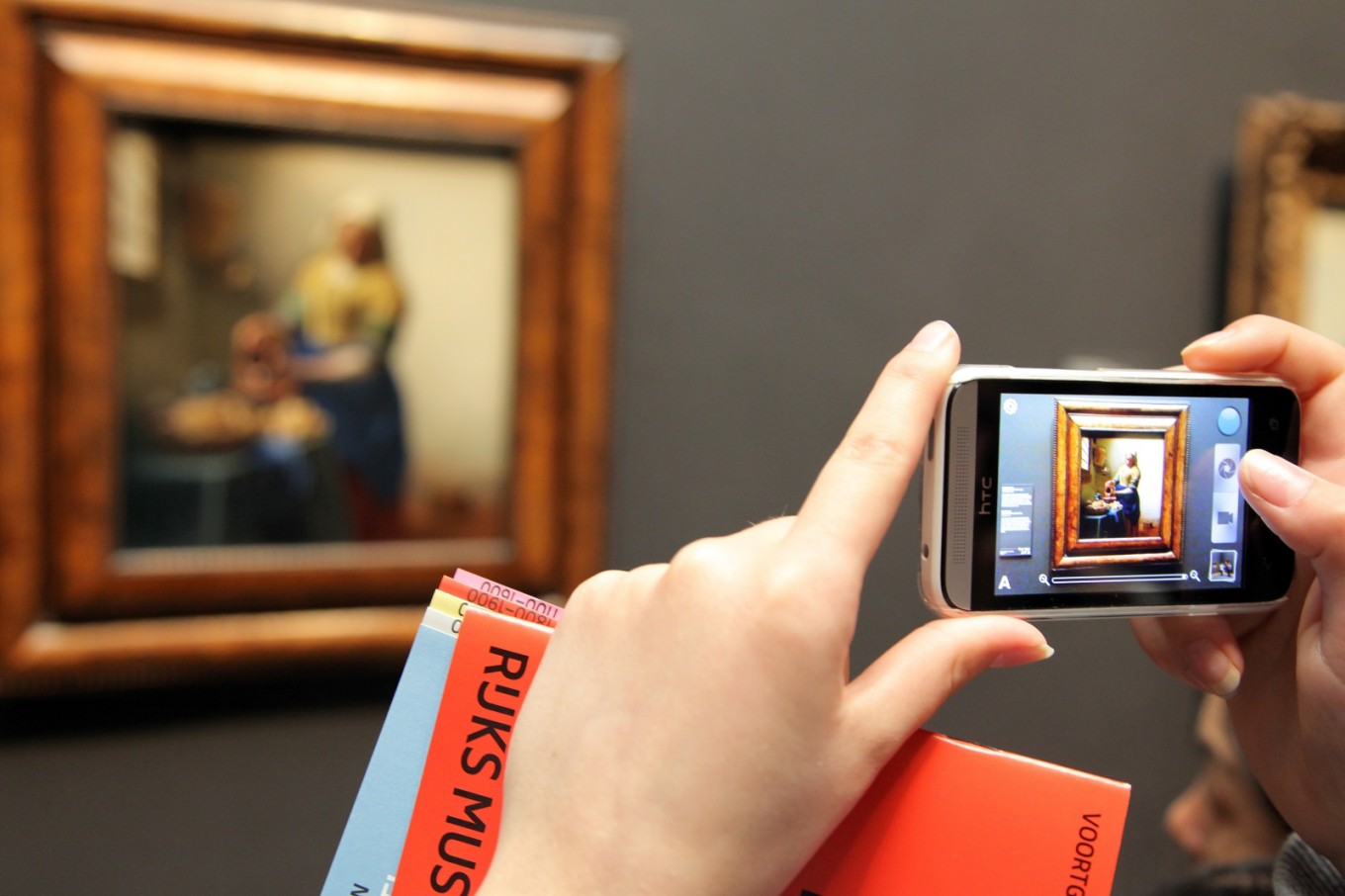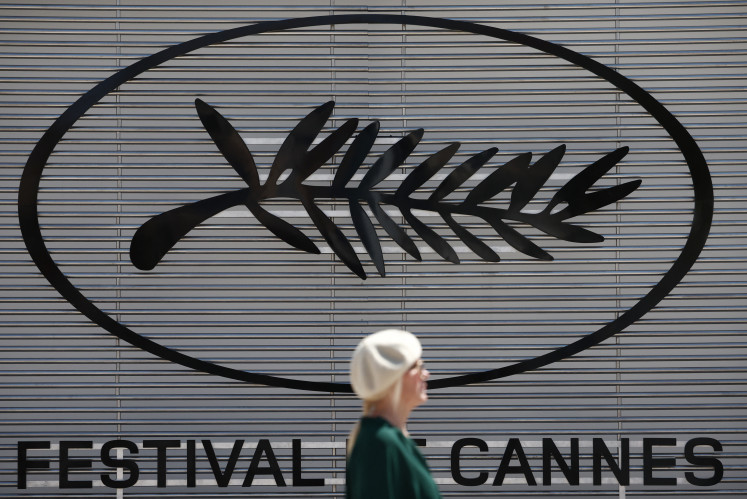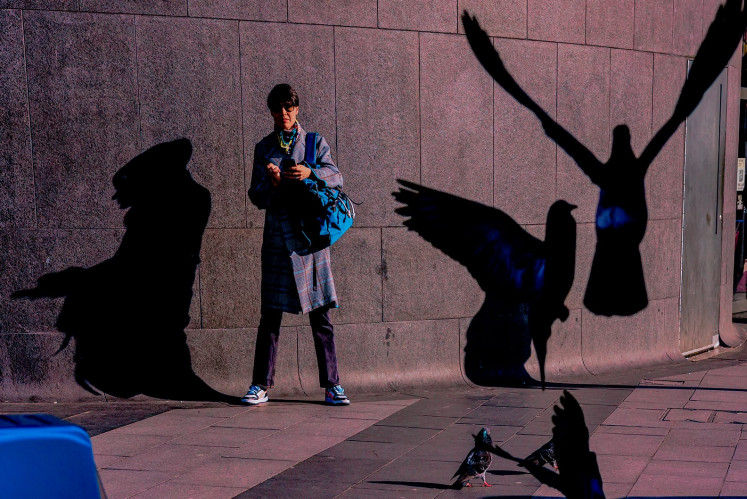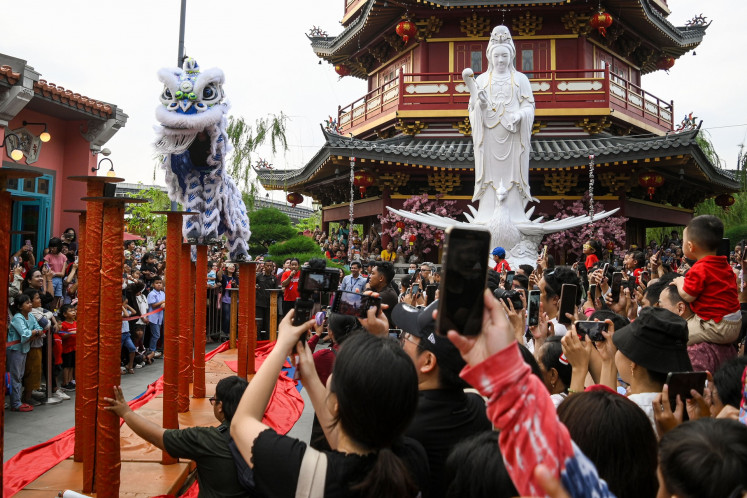Art historian says museums ban taking of photos so they can sell own images
Some museums still maintain rules not to take pictures, and one art historian has come out to say that the reason behind this is to make a profit.
Change text size
Gift Premium Articles
to Anyone
 Some museums still maintain rules not to take pictures, and one art historian has come out to say that the reason behind this is to make a profit. (Shutterstock/Jaroslav Morascik)
Some museums still maintain rules not to take pictures, and one art historian has come out to say that the reason behind this is to make a profit. (Shutterstock/Jaroslav Morascik)
P
hotos in museums have become a regular sight in social media feeds, with many eager to share their own favorite pieces of art—or at times, their own artful portrait.
Some museums still maintain rules not to take pictures, and one art historian has come out to say that the reason behind this is to make a profit.
Dr. Bendor Grosvenor, a British art historian and art dealer, spoke up on this practice after he was stopped from taking a picture while at the National Galleries of Scotland.
I'd love to be able to show you how excellent the new @NatGalleriesSco Rembrandt exhibition is. But at the merest hint of my iPhone, an assistant rushed over to say no photos allowed, and demand that I delete the photo I'd taken (of his hand). pic.twitter.com/uBMczjQLXA
— Dr Bendor Grosvenor (@arthistorynews) July 17, 2018
“I’d love to be able to show you how excellent the new @NatGalleriesSco [National Galleries of Scotland] Rembrandt exhibition is. But at the merest hint of my iPhone, an assistant rushed over to say no photos allowed, and demand that I delete the photo I’d taken (of his hand),” he tweeted yesterday, July 17.
He pointed out that the painting was lent by the Rijksmuseum in Amsterdam, which allows visitors to take pictures of artwork.
“Some of you thinking the ban on photography in exhibitions like this is due to museums wanting us to look at art in a certain way. It’s not. It’s all about protecting their ability to sell their own images,” he explained.
He told the Telegraph in an interview that by preventing visitors from taking pictures is also a “loss” for museum’s promotions.
“Of course, if you think about it, every person in that exhibition these days is a little advertising agent for that exhibition. I just wanted to tweet a little photograph from inside the exhibition and show how excellent the exhibition was, so people would go. If they don’t want me to do that then that’s their loss,” he said.
For English historian Dr. Simon Schama, there are some rules that have to be set with picture-taking.“There are some obnoxious things that I don’t think should be there like selfie sticks or taking selfies in front of paintings.”
“But for people to take photos of details of the works of art, I honestly can’t see what the problem is at all.”
Like Grosvenor, he believes the photo ban is to protect a museum’s income and says there is no copyright issue in the case of a Rembrandt painting, as it only applies to artists who are still alive.
Read also: Common art exhibition rules and why you should obey them
The National Galleries of Scotland explained in a statement that in general, photos are permitted for “personal and non-commercial use,” except for exhibitions that have works that do not belong to the museum.
“This is primarily because many lenders (private and public) understandably require us to restrict or ban photography of the works that they have entrusted to our care,” it said.
This article appeared on the Philippine Daily Inquirer newspaper website, which is a member of Asia News Network and a media partner of The Jakarta Post









